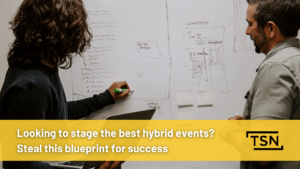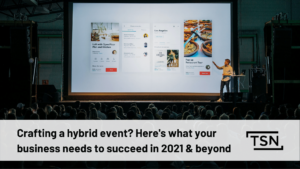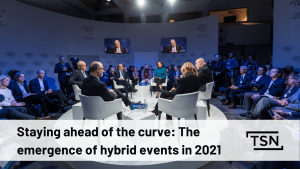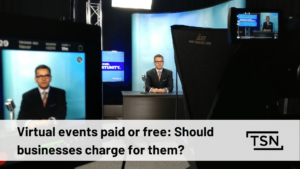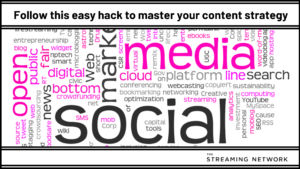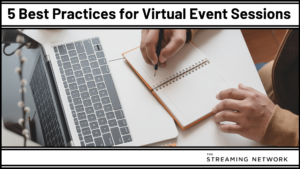Did you know that most companies set aside between 10 to 20% of their marketing budget to promote virtual events? Just developing compelling content is not enough to drive registration for your event – you need to get the word out, any way you can.
If you don’t have attendees made up of members of your target market, then all that effort to develop great, engaging content will be wasted. Marketing should not be an afterthought.
Well, fear not. Here are 5 key tips to help you promote your next virtual event.
1. Promotional schedule
Before you do anything else, you’ll need to establish the length of your promotional campaign. How much time will you allocate to getting the word out? While we see many business extend promotions, here at The Streaming Network (TSN), we find that at least four weeks is the sweet spot. This gives you enough room to do a big push in that final week leading up to your event.
Our internal data shows that most registrants will sign up in the three weeks leading up to the event, with half happening in that last week before an event. That final week, particularly the day of, is especially crucial, as nearly a quarter of attendees sign up during this period. On the other hand, those that commit four to six weeks out are more likely to have competing priorities come up (i.e., travel, business, meetings).
2. Personalize your invites
The method you use to invite people to your virtual event matters. Typically, businesses send out email or SMS invites en masse to their target audience. This may not always be effective, especially in jurisdictions where regulations limit just how many of these you can send before being penalized.
Instead, try adding a personal touch to your virtual event invitations. Several of our clients have seen tremendous success with phone blitzes leading up to their events. Considering the volume of emails your target attendees likely receive, this approach will help your business stand out from the crowd. We’ve even seen success sending out physical postcards.
Try leveraging speakers and business leaders too. Personal invites from such high-level figures, highlighting why a person would benefit from attending your webinar, can be highly effective.
3. Give them something of educational value
Did you know that 80% of people joining virtual events are doing so for educational purposes? The promise of learning something new and getting a tool they can use to do this themselves is very powerful. They have the chance to put what they learned into practice, bridging the gap between education and implementation.
You’ll get even more traction if what you’re delivering can be accredited by a professional body. Keep in mind, this won’t always work, as it depends on what you’re talking about.
4. Create a content hub
The period shortly after your event ends is important, if not just as important, for promotion. If your platform allows it (as it should), create recordings of your sessions. We find that customers who aggregate their content into an 0n demand hub for binge-watching (a la Netflix), can see up to 45% growth in audience.
This will help you target those people who missed your event but wanted to attend. As soon as your event is over, get your recordings out there along with a “Sorry we missed you” email.
Make this content as easy as possible to find on your website. If you have the resources, turn sessions into blog posts. You can also extract short video clips and upload them to social media, with links. People will come across these and visit your website to register and view more.
5. Social media advertising
Done correctly, social media advertising is another effective way to drive traffic to your virtual event. In fact, our clients find that 20 to 25% of net new leads come through this channel.
This goes beyond what you post on social media and into the analytics of where your target audience is. While the management of these programs can be quite reasonable, the costs can vary depending on which one you use – LinkedIn has one of the most expensive cost per leads (CPL), while Facebook is much easier on the pocketbook.
If you need more help, including transforming your physical events into virtual events, reach out to the experts at The Streaming Network today! We’re passionate about creating compelling events that people want to attend.

